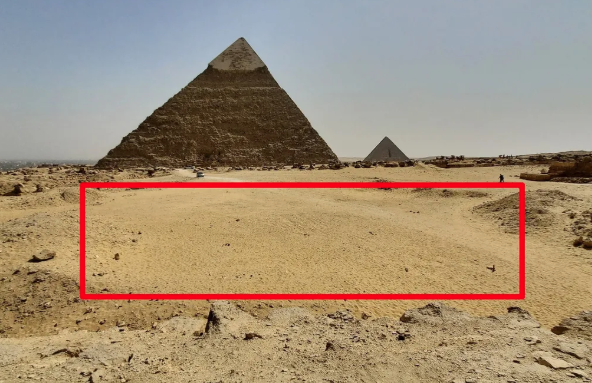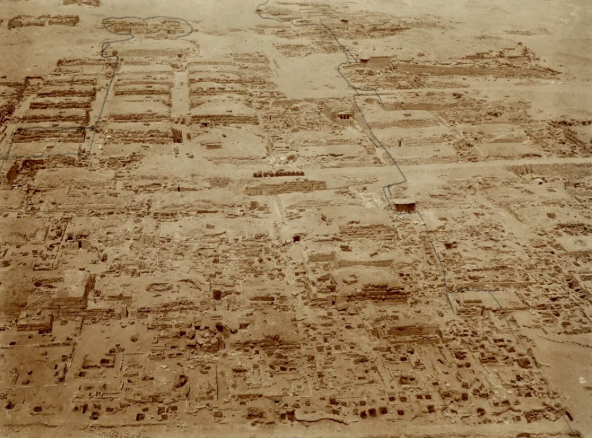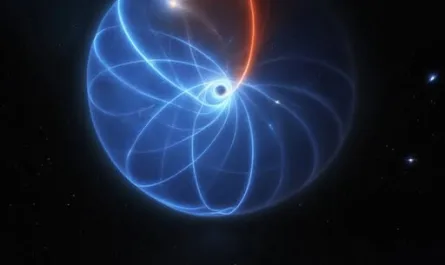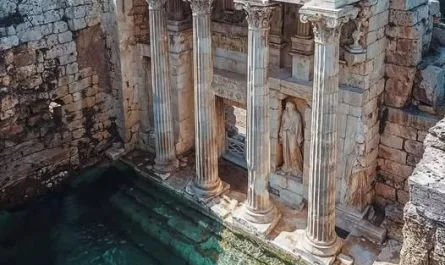Imagine standing beneath the shadow of Egypt’s iconic pyramids, only to learn that a hidden world lies beneath your feet—a vast underground network hinting at a lost civilization that might have built these ancient wonders. Sounds like something out of a sci-fi blockbuster, right? Recent claims about massive underground structures, giant statues, and mysterious engravings have set the internet abuzz, suggesting an advanced, forgotten people could be the true architects of the pyramids. But how much of this is fact, and how much is hype? Let’s dig into this jaw-dropping story and separate truth from speculation.

The Claim: A Hidden City Beneath Giza
In early 2025, a team of Italian and Scottish researchers, led by Professor Corrado Malanga from the University of Pisa, announced a bombshell: using Synthetic Aperture Radar (SAR), they allegedly uncovered a “vast underground city” stretching over 6,500 feet beneath the Giza pyramids. The findings, shared at a press conference and amplified by spokesperson Nicole Ciccolo, describe eight vertical, cylinder-shaped shafts plunging 2,100 feet deep, connected by pathways and staircases, with massive rectangular enclosures and a water system below the Khafre Pyramid. Even wilder? The team claims these structures are 38,000 years old—predating the pyramids by tens of thousands of years—and point to ancient Egyptian texts as evidence of a pre-existing, advanced civilization wiped out by a cataclysm. Giant statues and engravings of advanced construction techniques? That’s the juicy part fueling speculation that these “unknown people” built the pyramids with tools and methods beyond our modern grasp.
The Evidence: What’s Really Down There?
Before we get carried away imagining alien architects or lost Atlanteans, let’s ground this in what we know. Archaeological discoveries around Giza are nothing new, and recent tech like ground-penetrating radar (GPR) and electrical resistivity tomography (ERT) has revealed intriguing anomalies. In 2024, a Japanese-Egyptian team found an L-shaped structure and a deeper anomaly near the Great Pyramid, possibly an entrance to an underground chamber. These findings, published in Archaeological Prospection, used non-invasive imaging to detect structures without digging, preserving the site’s integrity. Similarly, the 2022 discovery of a mud-brick sun temple beneath Nyuserre’s Solar Temple at Abu Gurab, complete with beer jugs and royal seals, shows that hidden structures do exist and can reshape our understanding of ancient Egypt.
But here’s the catch: the “underground city” claim is shaky. Experts like Dr. Zahi Hawass, former Egyptian Minister of Antiquities, and Dr. Hussein Abdel-Basir, Director of the Antiquities Museum at Bibliotheca Alexandrina, have slammed the study, calling it unscientific and exaggerated. They argue that GPR and SAR can’t penetrate thousands of feet as claimed—tens of meters at best—and no peer-reviewed paper supports the findings. Lawrence Conyers, a GPR expert at the University of Denver, told the Daily Mail that while small chambers or shafts are plausible, a sprawling city is a “huge exaggeration.” Snopes also debunked viral images of the supposed structures, noting that a key cross-sectional image was likely AI-generated.
As for the “giant statues and mysterious engravings” of advanced tools, there’s no concrete evidence in the archaeological record. The Giza complex, built around 4,500 years ago for pharaohs Khufu, Khafre, and Menkaure, is well-studied. Workers’ cemeteries, tools like copper chisels and sleds, and a now-extinct Nile branch (the Ahramat Branch, mapped in 2024) show how Egyptians moved massive stones. No engravings of futuristic tech have surfaced, and claims of a 38,000-year-old civilization rely on speculative readings of ancient texts, not physical artifacts.
Why the Hype? The Allure of a Lost Civilization
So why are people losing their minds over this? The idea of a forgotten, advanced civilization taps into our love for mystery. From Atlantis to ancient aliens, the notion that the pyramids—already engineering marvels—were built by a super-advanced people is irresistible. Social media, like posts on X from users like @AkiliGoWild, fuels the fire, suggesting “ancient tech” lies buried beneath Giza. But these claims often lean on fringe theories, like those of Malanga, who’s known for UFO research, or earlier ideas like Christopher Dunn’s “power plant” theory about the pyramids. The lack of peer-reviewed data and reliance on press conferences rather than journals raises red flags.

Mainstream archaeology paints a different picture. The pyramids were built by tens of thousands of skilled Egyptian workers, not slaves, using ramps, levers, and sleds, with materials transported via the Nile. A 2018 discovery of a 4,500-year-old ramp at Hatnub and 2024 studies of the Ahramat Branch confirm these methods. The workers lived in a nearby city, ate well (thanks to cattle from the Nile Delta), and left behind no trace of sci-fi tech or giant statues.
The Abu Gurab Connection: Stargates or Solar Worship?
Since you mentioned the Solar Temple of Abu Gurab, let’s tie it in. Located near Giza, these Fifth Dynasty temples were dedicated to Ra, with alabaster altars and obelisks symbolizing the sun god. Some alternative theorists, like Abdel Hakim Awyan, claim Abu Gurab’s alabaster structures resonated harmonically, acting as “stargates” for connecting with extraterrestrial “Neters.” Could the recent “underground city” claims link to these ideas? Possibly, but the 2022 Abu Gurab find—a mud-brick temple beneath Nyuserre’s—points to earlier solar worship, not portals or advanced tech. The basins, sometimes called blood-collection pools in fringe theories, are likely for offerings, with no evidence of advanced tools or statues.
What’s Next? Digging for the Truth
The “underground city” claim is tantalizing but unproven. Targeted excavations, as Conyers suggests, could clarify what’s down there, but Egypt’s government is cautious about digs that challenge established narratives. For now, the scientific consensus holds that the pyramids were built by Egyptians using ingenious but human-scale methods. The real shock is how much we still don’t know—voids like the North Face Corridor in Khufu’s pyramid, found via cosmic rays in 2023, keep the mystery alive without needing alien architects.
Want to explore more? Check out the Sun Temples Project or National Geographic’s Lost Treasures of Egypt for legit updates on Abu Gurab and Giza. What do you think—lost civilization or overhyped radar blip? Let’s keep unraveling the secrets of Egypt’s past!
Sources: Smithsonian Magazine, Euronews, Egypt Independent, Snopes, Daily Mail, Popular Mechanics, The Jerusalem Post, CBS News, Wikipedia, X posts


